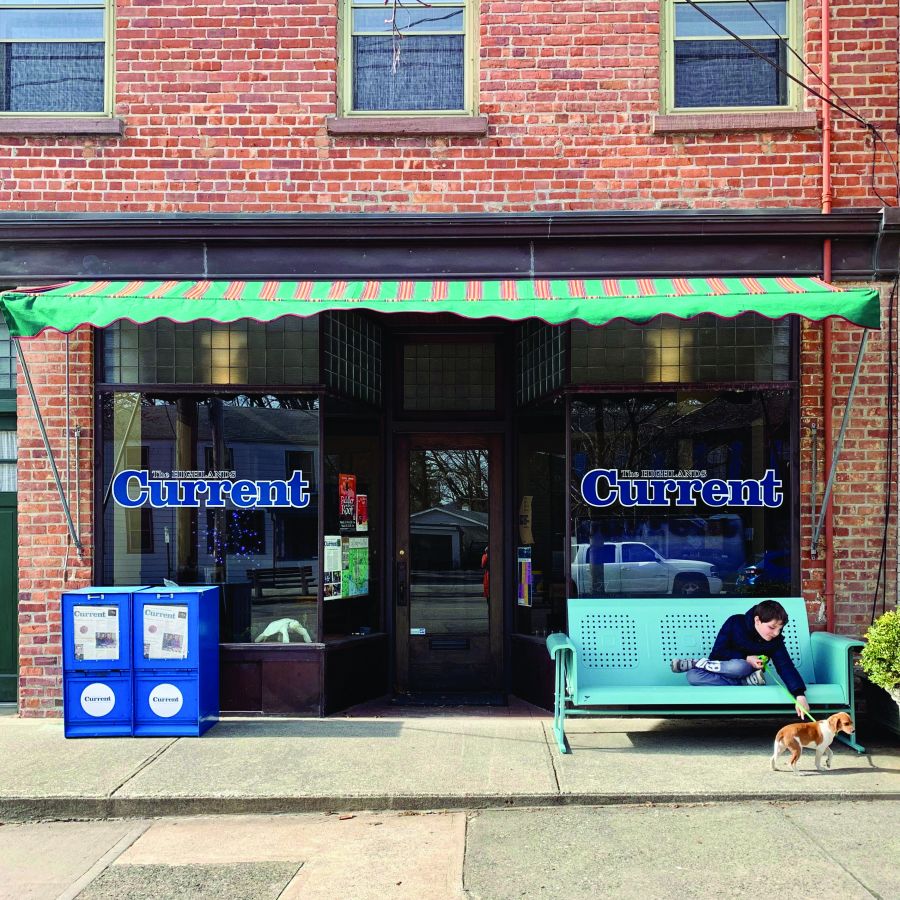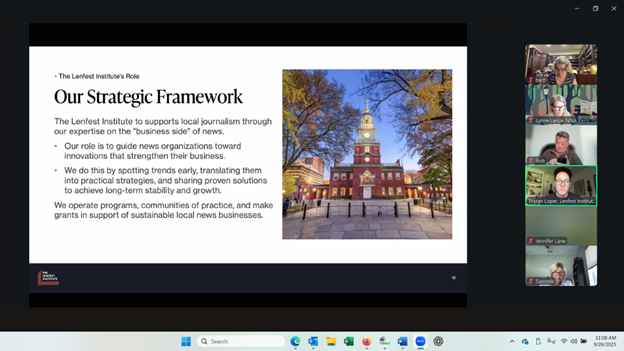One way to put philanthropy in your business model: a community news fund
Al Cross
May 1, 2022


Philanthropy is becoming part of the business model at many American newspapers, but not so much among community weeklies and the smallest dailies. Rural philanthropy has always been something of an oxymoron, with most of the big money staying in big places.
This worries a lot of us, including Richard Tofel, a former top executive at The Wall Street Journal and ProPublica, who now runs a publishing consultancy, Gallatin Advisory. In his Substack newsletter, excerpted on The Rural Blog on March 25, he noted the promising role that philanthropy is playing for journalism in metro areas, but wrote:
"What will happen to local news elsewhere, especially in smaller towns and rural areas, and particularly in places where people don’t tend to have as much money? ... There is a scenario — in the medium term perhaps a likelihood — that many of the poorer, more sparsely populated parts of our country face an especially bleak news picture. For them, advertising won’t be enough, readers and local donors lack resources, and help from the national philanthropic cavalry may not arrive, at least yet."
Tofel takes some encouragement from nonprofit startups with statewide missions, such as Mississippi Today and Mountain State Spotlight in West Virginia, which we noted in a blog item April 15. They have great reporters like Jerry Mitchell and Ken Ward Jr., who know every county in their states and can make or direct occasional forays to turn over rocks that need turning.
But only occasionally. Local accountability journalism will remain mainly the province of community newspapers, but they are finding that task harder to perform as their advertising-based business model gets shakier. Their audiences are less able to pay the exorbitant subscription prices being charged by metro dailies, or even to support the donor/member model that is showing promise in metro areas. How will they pay for journalism that their communities need?
They might find a big part of the answer in a recent report from The Ground Truth Project’s Report for America, which has funded hundreds of reporters in nearly every state, some of them at smaller community newspapers. The report is about community news funds, which it defines as funds created by partnership of foundation(s) and newsroom(s) to create long-term support for a local news ecosystem.
That definition is designed to encompass communities large and small, and the first case study in the report is from Traverse City, a town of 16,000 in northern Michigan. When the daily Traverse City Record-Eagle needed matching money to get a reporter from Report for America two years ago, it got more and different help than it expected from the Grand Traverse Regional Community Foundation.
Some foundation board members were reluctant to fund journalism or a for-profit business. Shifting these paradigms took time, but Executive Director Dave Mengebier said he persuaded the board and the local funding community that “If you want to have healthy, resilient, thriving communities, which is part of our vision statement, then there are certain institutions that are really important to exist in your community. This includes having a newspaper, you know, along with things like having a community library, and a vibrant arts-and-culture community.”
That’s a story that local newspapers have failed to communicate, and that keeps them from getting traction as they get into philanthropy, says Nate Payne, executive editor of the Record-Eagle.
The foundation has put $10,000 into the community news fund, but that hasn’t meant as much as the help it has given the Record-Eagle with fundraising. Mengebier, Payne and Publisher Paul Heidbreder Payne got guidance and support from a retired journalist in the community who was interested in the paper’s future, and meetings of the four helped Payne frame his case for financial support from others. Last year, he ran a crowdfunding campaign that raised about $8,500 and an end-of-year email campaign that produced $5,550. This year, he has $15,000 from foundations.
“What Nate needed — and what newsroom leaders across the country need — wasn’t a quick fix. It was to dramatically re-envision the way the community supports local news,” the RFA report says. “Local news needs support through multiple grants from multiple donors for multiple years into a single community fund.”
The report acknowledges that “Many foundations have bylaws or practices that direct their funds exclusively to non-profit entities and avoid for-profit ventures, news or otherwise.” But a strong community foundation is a meeting place for people who have money to give to good causes, and that’s how the foundation in Traverse City was most able to help the Record-Eagle, a Community Newspaper Holdings Inc. paper. And now it’s talking with other community foundations in Michigan about setting up community news funds.
In smaller communities, foundations are generally not as strong, or don’t even exist. And, truth be told, some community newspapers aren’t good enough to earn broad support from local funders. If you’re going to ask your audience for more money, you must provide something for which at least some of them are willing to pay more.
For independent newspaper owners who can’t find the right buyer, the key move could be transferring the paper to a nonprofit corporation and living on salary rather than distributions of profits. Nonprofit status makes gifts tax-deductible, makes grants easier to get and eliminates corporate income taxes.
We will see more newspaper owners make the move that Liz and Steve Parker made in early April with their New Jersey Hills Media Group, the state’s largest independent group of community newspapers. It is now owned by the nonprofit Corporation for New Jersey Local Media, which follows “a model first used by the Lenfest Institute and the Philadelphia Inquirer,” the newspapers reported. “The newspaper group will function as a societal benefits corporation with its own board," and the nonprofit has a separate board and an executive director, Amanda Richardson. “This structure preserves the traditional editorial independence of the newspapers,” she said. And it should preserve good community journalism in northern New Jersey.
There will be many answers to the business-model problem, but all will rest on two principles: Someone must pay for journalism, and if the journalism is not good, few will pay for it.
Al Cross edited and managed rural newspapers before covering politics for the Louisville Courier Journal and serving as president of the Society of Professional Journalists. He is the extension professor of journalism at the University of Kentucky and director of its Institute for Rural Journalism and Community Issues, which publishes The Rural Blog at http://irjci.blogspot.com.









